Search Images
Browse Content (p. 920)
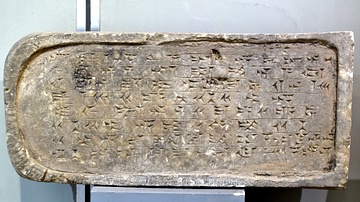
Image
Inscribed Wall Panel from Nimrud
This cuneiform inscription on this gypsum wall panel narrates the building process and construction of a palace by the neo-Assyrian king Ashurnasirpal II at the city of Nimrud. From the North-West Palace at Nimrud, in modern-day Ninawa Governorate...
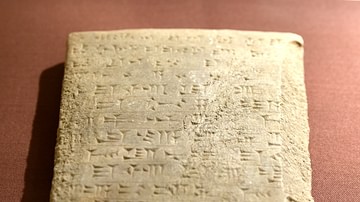
Image
Clay Tablet of Adad-Nirari II from Assur
Cay tablet narrating the building works of the Assyrian king Adad-Nirari II (r. 911-891 BCE), from Ashur (Assur), modern-day Iraq.
The Iraq Museum, Baghdad.
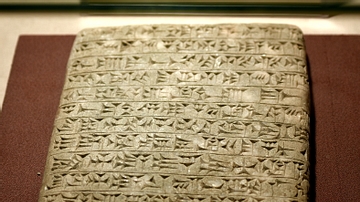
Image
Stone Tablet of Queen Yaba
This stone tablet was found in a niche into the right-hand wall of the space leading to the burial chamber of Tomb II (one of the vaulted burial chambers of the so-called Queens' Tombs inside the North-West Palace at Nimrud). The cuneiform...
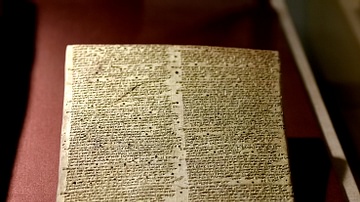
Image
Clay Tablet of Shalmaneser III from Ashur
This clay tablet narrates the building works of the Assyrian king Shalmaneser III (reigned 858-824 BCE). From Ashur (Assur), Iraq. (The Iraq Museum, Baghdad).
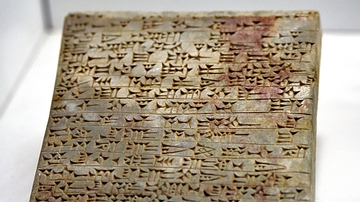
Image
Tablet of Adad-Nirari II
The cuneiform inscription on this clay tablet states that the neo-Assyrian king Adad-nirari II (reigned 911 - 891 BCE) has built a city and a palace. From northern Mesopotamia, Iraq. (The Iraq Museum, Baghdad).
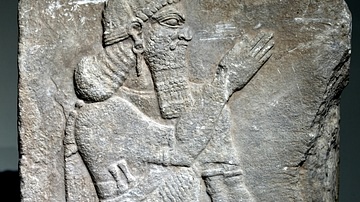
Image
Wall Relief of Ashurnasirpal II from Nimrud
This gypsum wall panel came from the North-West Palace of Ashurnasirpal II (883 - 859 BCE) at Nimrud. Ths so-called "Standard Inscription" of Ashurnasirpal II runs horizontally across the lower part. The king wears a diadem and holds a bucket...
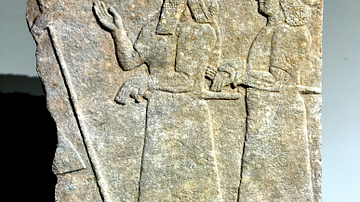
Image
Relief of Ashurnasirpal II & Attendant, Nimrud
This gypsum wall panel came from the North-West Palace of Ashurnasirpal II (883 - 859 BCE) at Nimrud. The king greets an unidentified figure before him (now lost) who holds a long staff. Behind the king, an Assyrian eunuch (guard or attendant...
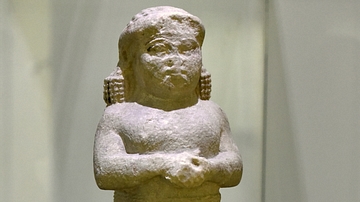
Image
Statue of a Woman from Ashur
This smaller than life limestone statue depicts an Assyrian woman. She clasps her hands in a prayer gesture. The name of the woman is unidentified. From Ashur (Assur), in modern-day Saladin Governorate, Iraq. Neo-Assyrian period, 911-612...
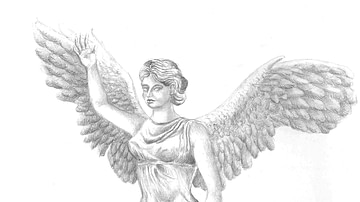
Image
Artist’s impression of the Nike of Samothrace
Artist’s impression of the Nike of Samothrace with head, arms, feet, and right wing restored.

Image
Relief of a Neo-Assyrian Queen
Limestone stele fragment depicting a woman looking to the left and wearing a headdress of the royal women. From Kli'eh, near Haditha Dam, Al-Anbar Governorate, Iraq. Neo-Assyrian Empire, 911-612 BCE.
The Iraq Museum, Baghdad.